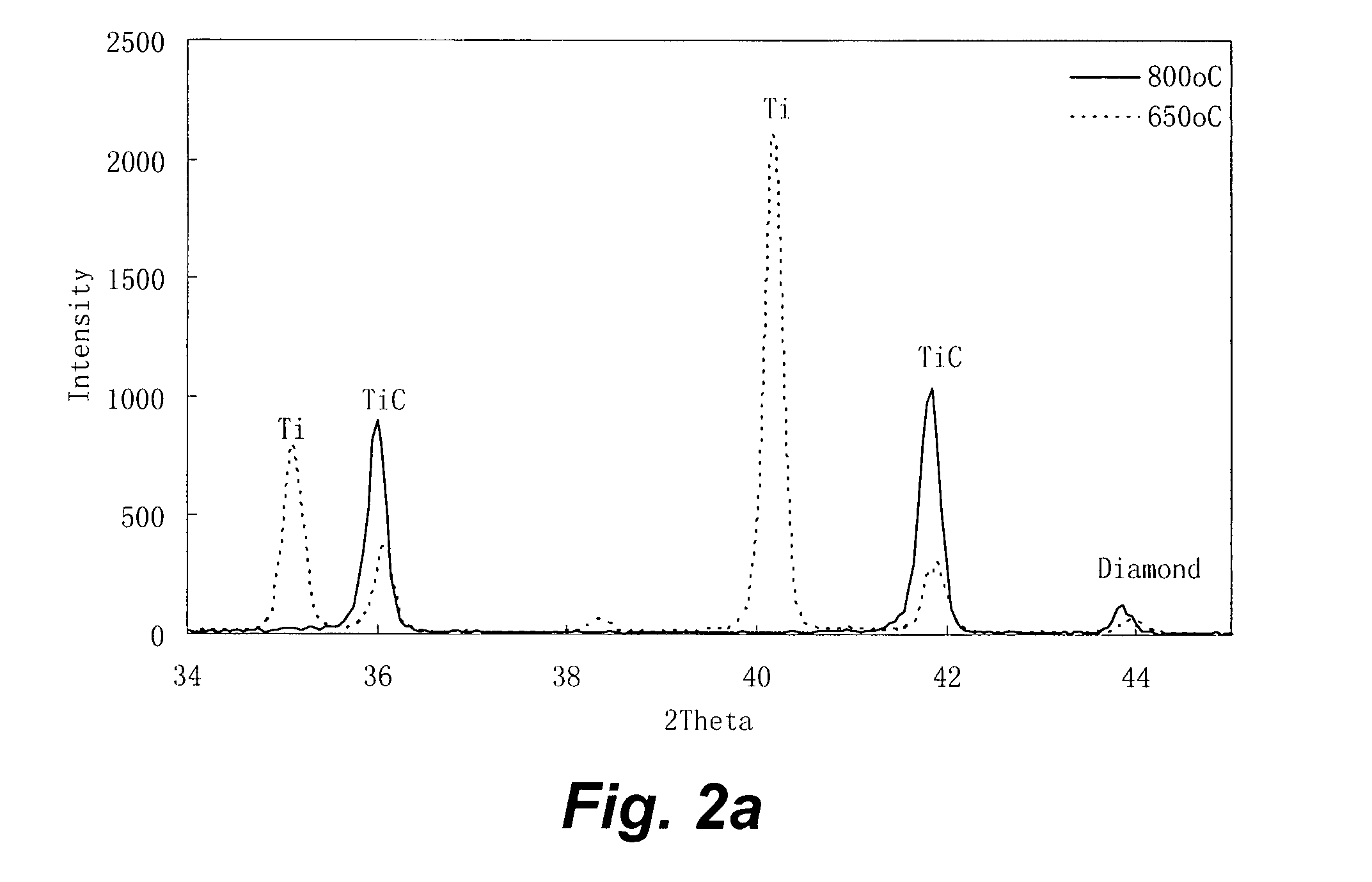Method for making a highly stable diamond film on a substrate
a technology of diamond film and substrate, which is applied in the direction of multiple component coating, electro-mechanical coating, transportation and packaging, etc., can solve the problems of diamond film peeling away from the substrate, structural mismatch, and reduced adhesion
- Summary
- Abstract
- Description
- Claims
- Application Information
AI Technical Summary
Problems solved by technology
Method used
Image
Examples
example
[0057]A specific sequence of steps performed in fabricating a diamond film electrode will now be described. The electrode was grown on a pure titanium substrate according to the presently disclosed multi-stage hot-filament chemical vapor deposition (HFCVD) method. In order to increase the conductivity, boron element was doped into the diamond film by adding boron containing chemicals into the gas phase.
[0058]In order to enhance the practical application, selection of a proper substrate material is important. Titanium is a preferred choice due to its relatively low price, high anti-corrosion and quick repassivation behavior, compared with silicon and some other valve metals, such as tantalum and niobium. However, in some circumstances it may be advantageous to use these and other valve metals, which may be used as substrates in any of the presently disclosed methods. A boron doped diamond film coated on titanium substrate (Ti / BDD) electrode has attracted much attention as one of the ...
PUM
| Property | Measurement | Unit |
|---|---|---|
| time tn | aaaaa | aaaaa |
| temperature Tn | aaaaa | aaaaa |
| temperature Tn | aaaaa | aaaaa |
Abstract
Description
Claims
Application Information
 Login to View More
Login to View More - R&D
- Intellectual Property
- Life Sciences
- Materials
- Tech Scout
- Unparalleled Data Quality
- Higher Quality Content
- 60% Fewer Hallucinations
Browse by: Latest US Patents, China's latest patents, Technical Efficacy Thesaurus, Application Domain, Technology Topic, Popular Technical Reports.
© 2025 PatSnap. All rights reserved.Legal|Privacy policy|Modern Slavery Act Transparency Statement|Sitemap|About US| Contact US: help@patsnap.com



